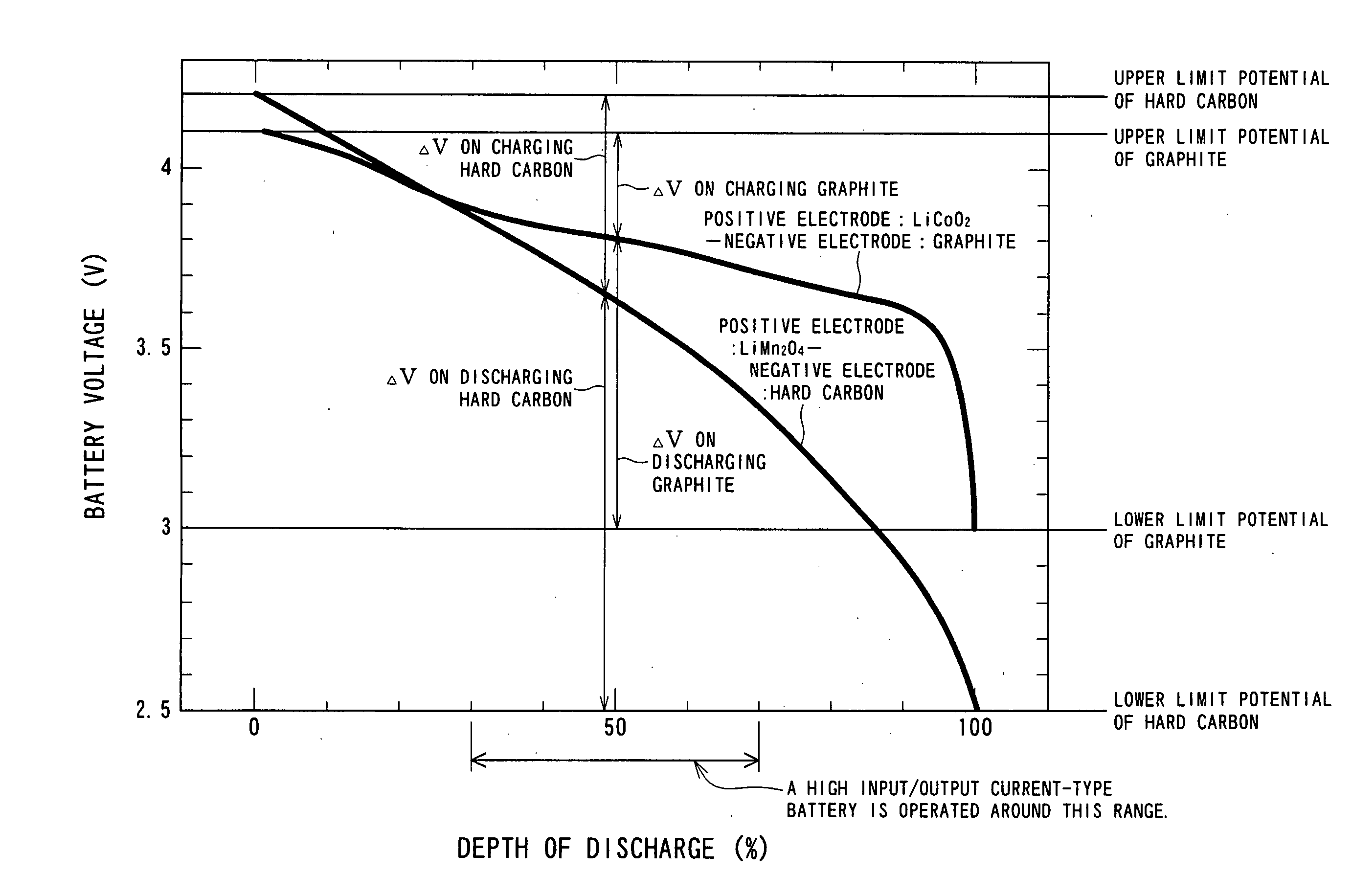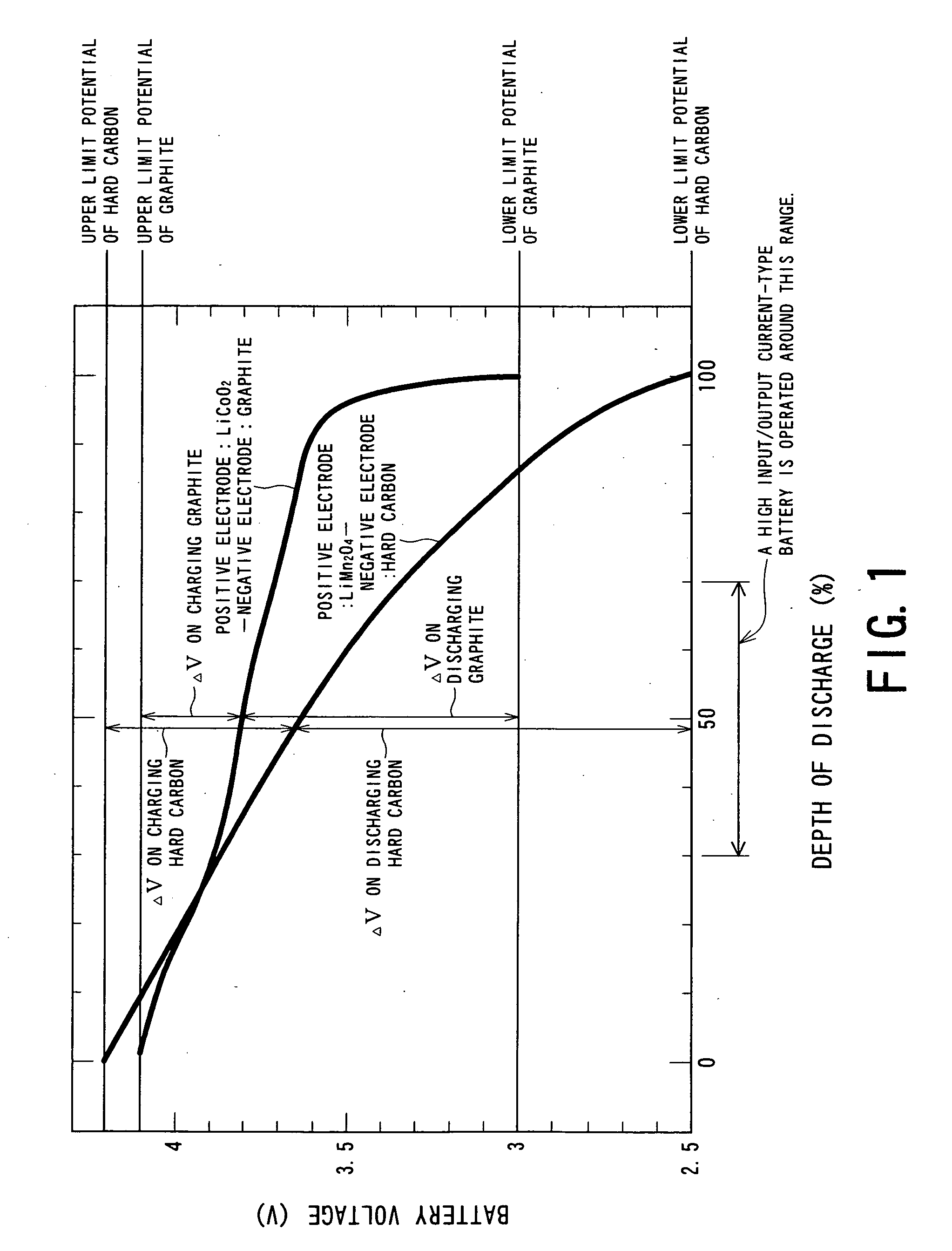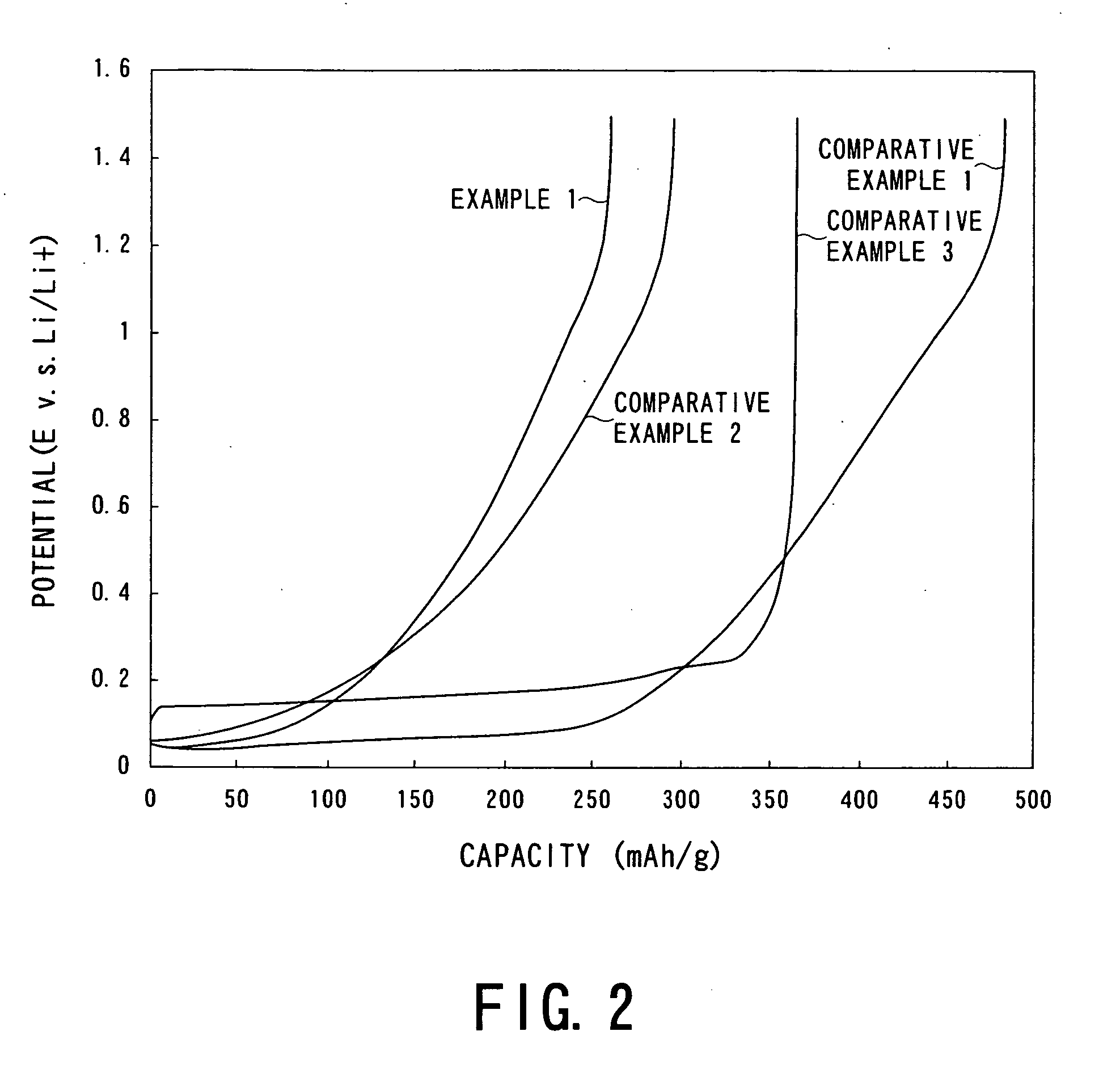Negative Electrode Material for Nonacqueous Electrolyte Secondary Battery of High Input/Output Current, Method for Producing the Same and Battery Employing Negative Electrode Material
a negative electrode material and secondary battery technology, applied in the direction of secondary cell servicing/maintenance, non-aqueous electrolyte cells, cell components, etc., can solve the problems of increasing irreversible capacity and lowering cycle characteristics, and achieve the effect of small lowering efficiency
- Summary
- Abstract
- Description
- Claims
- Application Information
AI Technical Summary
Benefits of technology
Problems solved by technology
Method used
Image
Examples
examples
[0062] Hereinbelow, the present invention will be described more specifically with reference to Examples. Physical property values described in the specification including the following Examples are based on values obtained according to the following method.
[0063] [Evaluation Test Items]
(XRD Measurement)
002 of a Carbon Material>
[0064] A powdery sample of a carbon material was packed in a sample holder and irradiated with monochromatic CuKα ray through a graphite monochrometer to obtain an X-ray diffraction pattern. The peak position of the diffraction pattern was determined by the center of gravity method (i.e., a method wherein the position of gravity center of diffraction lines is obtained to determine a peak position as a 20-value corresponding to the gravity center) and calibrated by the diffraction peak of (111) plane of high-purity silicon powder as the standard substance. The d002 value was calculated by the Bragg's formula with the wavelength of CuKα ray as 0.15418 nm.
d0...
example 1
[0075] A carbonaceous material was produced in the same manner as in Comparative Example 1 except that the nitrogen flow rate at the time of carbonization was changed to 1 ml / min.
example 2
[0076] 30 g of the powdery carbon precursor obtained in Comparative Example 1 was placed in a cylindrical crucible comprising a sample accommodating part measuring 40 mm in diameter and 60 mm in height, and the inlet thereof was sealed by a carbon sheet so as to effect carbonization while having generated gas during the carbonization remain in the crucible. The crucible was then placed in an electric furnace; and the interior of the system was evacuated under vacuum and replaced with nitrogen. Then, the interior of the electric furnace was rendered in a nitrogen gas atmosphere and heated to 1200° C. at a rate of 250° C. / hour, followed by holding at 1200° C. for 1 hour, to produce a carbonaceous material.
PUM
| Property | Measurement | Unit |
|---|---|---|
| lithium diffusion coefficient | aaaaa | aaaaa |
| particle size | aaaaa | aaaaa |
| particle size | aaaaa | aaaaa |
Abstract
Description
Claims
Application Information
 Login to View More
Login to View More - R&D
- Intellectual Property
- Life Sciences
- Materials
- Tech Scout
- Unparalleled Data Quality
- Higher Quality Content
- 60% Fewer Hallucinations
Browse by: Latest US Patents, China's latest patents, Technical Efficacy Thesaurus, Application Domain, Technology Topic, Popular Technical Reports.
© 2025 PatSnap. All rights reserved.Legal|Privacy policy|Modern Slavery Act Transparency Statement|Sitemap|About US| Contact US: help@patsnap.com



